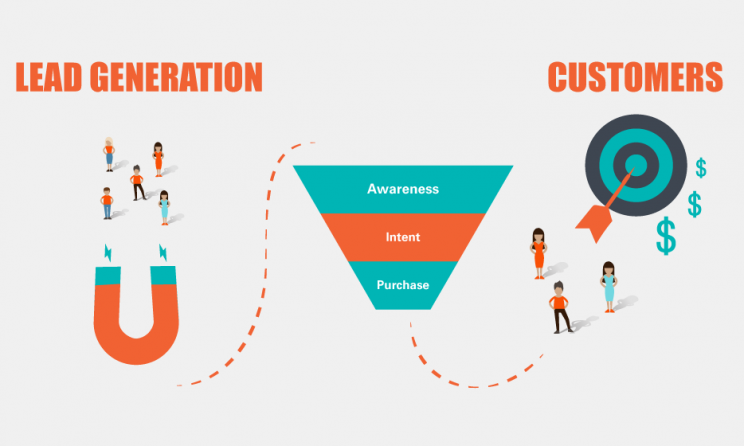
Struggling to generate leads with your content marketing strategies? High-quality content goes beyond just explaining your products and services to the target audience; it also leads the reader to take the right actions. Generating leads through high-quality content requires business knowledge combined with digital marketing expertise.
But it doesn’t have to be as daunting as it sounds. Successful content marketing is all about providing the right context to the audience that propels them to take the next step. Here are a few simple tips to help you strategize and revamp your content marketing to generate leads and drive actions:
Contents
Step One: Knowing Your Market & Target Audience
The first step to creating content that converts is to know who your target audience is and what the market is looking for. Any successful marketing strategy requires this information.
It should be leveraged to help every marketing action that goes in, be it for email marketing, video marketing, social media, or the website. To ensure you know your audience, you can start by doing research or surveys while leveraging industry know-how to answer a few simple questions:
- Who is your target audience?
- What are they looking for?
- Where are they getting this information from?
- Why do they need this? Why will they interact with your brand?
- When is the right time to reach out?
- How do you plan to approach your target audience?
These questions will help you create a target persona apt for your content marketing and other materials. Brands may also have multiple target personas depending on the range of products and services they offer, so content marketers need to create specific and unique content for each group.
Meanwhile, brands can do market research using a third-party agency to know the landscape and go beyond their scope to target a diverse group.
Step Two: Define the Customer Journey of Your Audience
Once the target audience is defined, the next step is to know the various stages of the conversion journey they will be going through. This is famously known as the lead generation pipeline, where the target audience goes through each stage before it actually becomes a lead.
To ensure the audience is aware of your brand, your offerings and can make an informed decision, content marketing requires a strategic view of what content is shown to the audience at each level.
The simple content marketing journey to generating leads goes as:
- Attract: Create content that attracts the target audience. These can be blogs, website content, social media posts, or high-level content that appeals to a range of audience groups. In this stage, the audience needs to be provided with information to enlighten and entertain the leads.
- Engage: This is ideally the next stage of the lead generation process. Engagement requires the audience to have performed a specific action, .e.g clicking on a particular post, submitting a form on the website, etc. Engagement requires knowledge of the audience to provide specific information.
- Convert: When you know the target audience is interested and interacts with your content, the next step is to provide content to help convert the lead. This can mean email marketing, targeted ads, or other avenues to help in converting the lead.
Step Three: Create Content to Help Rather Than to Sell
Now that you have finalized the customer journey and target audience, it is time to start selling! But wait, before you can make a sale, you need to build trust with the audience. Online selling is all about creating credibility and awareness, for the audience is unlikely to engage with a brand they do not trust.
The best strategy is to understand the value you bring to the audience and be helpful rather than a pushy salesman. For example, if you are a product company for bankers, create blogs, whitepapers, or video content to help the audience with a problem statement.
If your blog or content helps the audience builds the right credibility, the audience will automatically trust and interact more, like subscribing to your newsletters, following your page on social media, etc.
In the digital age, we recommend using video content to maximize impact. You can turn your simple content into a video or use hubspot video to enable optimized video content in all your distributions.
Step Four: Reuse & Distribute Your Content
Several brands fail at content marketing due to a major flaw, not reusing or distributing their content. For example, you may create a spectacular thought-leadership article, but it may not get the right attention if not maximized properly. The ideal approach is to leverage and distribute your content in various ways.
You may use strategies like:
- Email campaigns that entice the reader and have a proper CTA to get the reader to the article
- Social media campaigns or ads
- Video marketing to get higher reach for the article
- Focused landing page to increase lead conversion once the audience has interacted with the article
This combination of distribution is the right approach to maximize visibility in an age where there is plenty of content available on any topic under the sun!
Step Five: Optimize Content Using Targeted Approaches
Finally, content optimization is a must if you wish to build a strong connection with your audience. The ideal approach is to have a campaign and aligned web pages or blogs to keep the audience hooked.
E.g., if you have created a whitepaper that is extremely focused on a particular issue, don’t just expect the audience to find it. You may think of social media marketing or email marketing to maximize the reach.
Remember, content marketing is not an isolated department, but one that’s best when used in collaboration. And content doesn’t always have to be static, as nowadays video email and dynamic website are in vogue. Make sure you leverage all the new approaches in your content marketing strategy.
Conclusion
Content marketing is not just about creating high-value content but ensuring it reaches the right audience during the opportune time. While these steps are simple to implement, the idea is to analyze and maximize the results to get better output. Remember that social media and blogging space these days is full of content, and it will take the right focus and expertise to help your content stand out.
With proper implementation, these five steps will ultimately help you build the right credibility with your audience and make it easier to generate leads. Keep optimizing and ensure the core focus is on adding value to your target audience, not just making the sale!









